I have never known what to make of Chevrolet’s Corvair such as today’s 1962 Monza subject. While I was never a fan, I admired the combined attempt of Chevrolet and GM to build a compact designed to do competitive battle, ostensibly, with Volkswagen and their Type I “Beetle”. The Corvair’s history is a bit star-crossed but they have their followers, collector clubs and remain popular to this day, 54 years after ending production. This example looks pretty good, at a distance anyway, so let’s examine it a bit closer and see what makes it tick. Located in Almond, New York, this air-cooled rear-engined Club Coupe is available, here on eBay for a BIN price of $3,260. There is a make-an-offer option too.
Corvairs are divided into first-gen (’60-’64) and the second-gen, Bill Mitchell inspired ’65-’69 version. Corvair initially was offered as a two-door sedan (or Club Coupe depending on the description employed), a convertible (mid ’62), a four-door sedan, a station wagon – briefly called a Lakewood, a Greenbriar van, and a Rampside pickup truck. It’s further interesting to note that Ford and ChryCo went one way with their more traditional Falcon and Valiant compacts, respectively, while Chevrolet employed this decidedly non-traditional, domestically speaking, design. Did the public accept these radiatorless Chevy compacts? You bet! Over 330K copies went to first-time buyers in ’62 alone.
Our subject car is claimed to be a top-level Monza but I didn’t think, initially, that it showed as one. I decoded the model number, as recorded on the trim tag, and sure enough, it’s a Monza. My thought is that the identifying badging has been removed. The finish is faded and mismatched but the body is straight and there’s no indication of rot occurring though there is some surface rust starting at the base of the driver’s side C-pillar. The seller adds, “Floors are mostly good, the passenger compartment floors have been patched“. The glass is said to be mostly excellent and the chrome still shines decently.
Corvair had two different engines available in ’62, both were 145 CI flat, six-cylinder, air-cooled units generating either 84 or 102 gross HP. Which one is employed here is not said; the VIN is not indicative and I don’t know Corvair engines well enough to make a visual determination. Stated is, “runs and drives pretty good starts right up every time. Carbs could use some tinkering“. The seller also claims that the fan belt keeps flying off which sounds like either a stretched belt or misaligned pulleys. Unfortunately, this Monza utilizes a two-speed Powerglide automatic transmission which probably takes some of the fun out of the driving experience. The seller does claim that it shifts properly.
The interior shows as a work in progress. The carpet has been replaced but it’s roughly installed; the kick panels are missing; the bucket seat’s vinyl upholstery is split, and one of the door panels has disappeared. There’s an original AM Delco radio in place and attached beneath it, is an FM converter – I have encountered quite a few of those lately.
I will admit that I prefer the second-gen Corvair with its typical GM mid to late ’60s light, breezy, and stylish lines but this 60-year-old Corvair is an important example from GM’s can-do past and should not be ignored. If an early Corvair fits your bill, this one seems to be a reasonable buy, wouldn’t you agree?
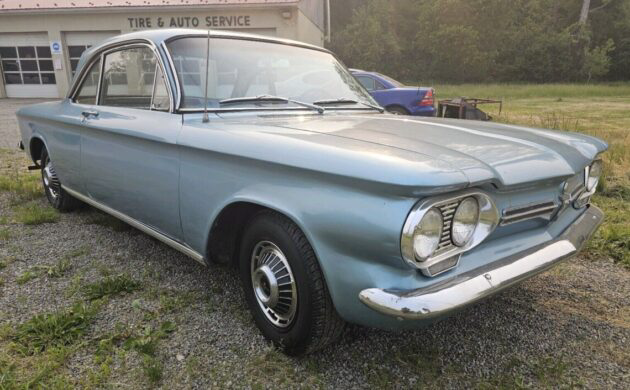
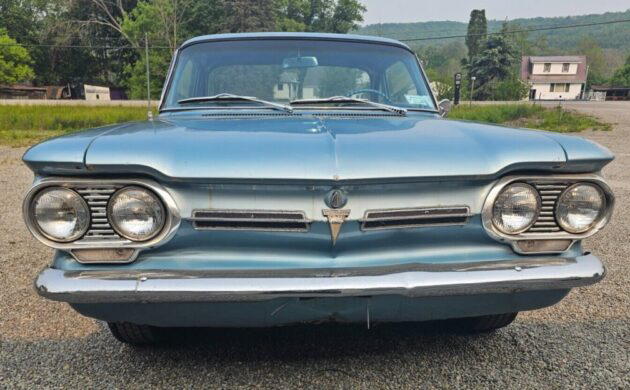
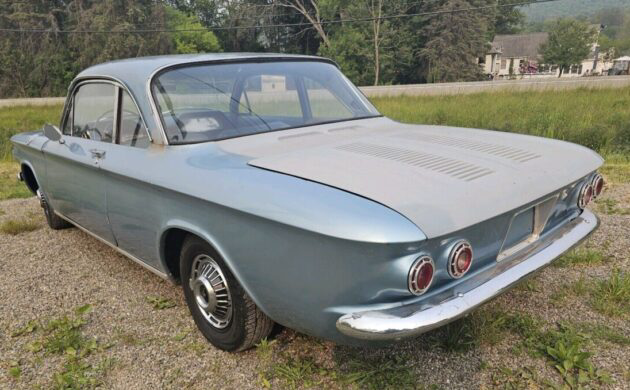
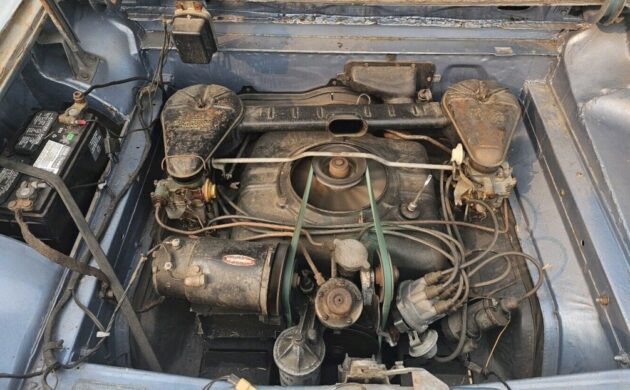
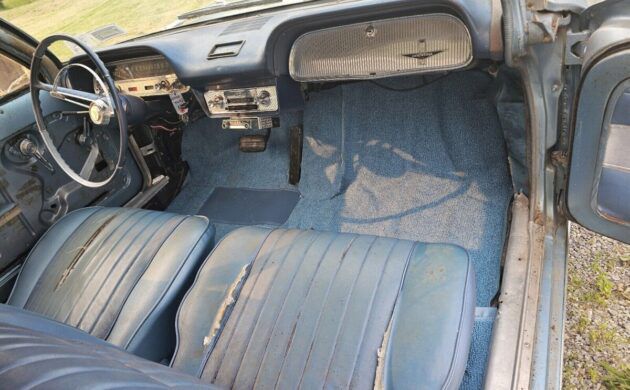
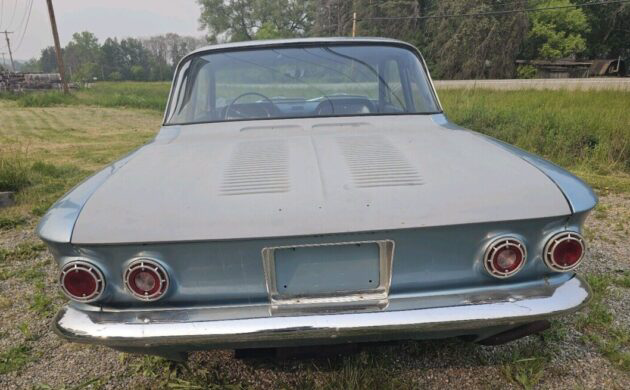




My family had three Covairs, a ’60, ’64, and a ’65 Monza. All three ran without any problems and the modified ’65 I had turned out to be a fast, fun car to own. Considering the age this is a pretty nice car. Price isn’t going to hurt anyone though I would have thought it would be a bit higher.
No Jim GM never made a beetle you should know this, something else I see that people say FJ 40 Toyota Jeep ,no it is not…
I think you may have misunderstood the headline.
Very similar to the one our family had when I was a kid in OH. My favorite feature was the heater duct below the rear seat.
This is not GM’s Beetle. All the two have in common is air-cooling and engine placement. Many other manufacturers did it – from Renault to Fiat to Subaru.
This, like the R10, was a short-lived product that was flawed for the market it was aimed at. The Renault 10 was flawed in that it was not engineered or tested in the ways Americans use cars – all weather, long distances, with corrosive de-icers on roads. France is compact; Europe is shorter across than the distance from Chicago to New York, and mass transit abounds. Cars are discretionary purchases and used selectively.
The Corvair was more rugged, but the final engineering was (in fact) done by bean counters. Swing axles replaced more-sophisticated rear-suspension layouts. Lack of retainers to prevent rim-jacking and lifting, flinging the rear in extreme cornering, led it to a short life, with much of it in the dock in courtrooms.
The Beetle, by comparison, was conceived as a State (or Party) Car, and with the collapse of the German government, trained workers found they could earn ration cars by making crude facscimilies of the KdF-Wagen on their damaged machinery. This led to one of the first industries to be revived in the rubble of a destroyed, partitioned Germany…it was, in the midst of humility, a national pride.
And the cars were well made, by the determined workforce, struggling to prove their worth – at their stations, and in the world. European and then American buyers noticed. The Beetle, by the time it got to the United States, was a design 20 years old, and wildly obsolete – but inexpensive, built like a jeweled watch, and thrifty in operation.
And, because of its image…an image that essentially rehabilitated Germany in the minds of millions…it stayed unchanged, for 40 years in some markets.
Unlike the Corvair, which like all GM products back then, had a schedule – five years and a new one. The Corvair, lasting ten years, not 40, had twice the redos of the Type 1.
Few of those attributes could be put to the Corvair. It was stylish in its launch – trading fins for blades and a character line all around its body. It had an adaption of the Bubble Top that GM was so proud of. The hint of the departing wraparound windshield, was put on the first generation.
And the engine. It was a technological marvel – of that marvelous material, aluminum; without coolant; a flat six, and in the rear – where the designers hoped it would provide better traction, without the instability we know would come of a heavy weight behind the axle centerline.
It was a modern marvel – and like many of that time, under-engineered; turned over to consumers for beta testing. Where, as we all know, it failed several important tests.
The Type 1 and the Corvair Gen1. Two radically-different versions of the same format. And very-much unalike.
It’s hard to deny, though, that GM was inspired by the Beetle, and the Transporter for that matter. Most of the other rear-engined, air-cooled boxers around were inspired by the Beetle too; it’s a shame Tatra didn’t sue all of them. By the time the Corvair project got rolling, the Beetle was the most successful import on the US market. There’s no way that GM would have jettisoned over 50 years of front-engine, rear-drive, water-cooled expertise and come up with the Corvair as we know it without strong inspiration from VW. Certainly they hoped it would be as successful as VW, but the fact that the Chevy II was on the market just two years later shows that GM panicked when they saw Corvair’s sales. As you mentioned, one of the 1st generation Corvair’s biggest weaknesses was another thing copied straight from VW: swing axles. If they had opted for full IRS from the start, we may never have heard of Ralph Nader; but the Corvair was probably too weird and haphazardly executed to ever sell as well as GM hoped.
The BIN has been reduced to $2,995. If I had the space, I would fill lt with this decent, easily restored piece of GM history.
There wasn’t a “lack” of retainers. The shock absorbers limited the travel of the swing axles. A more sophisticated rear suspension design arrived in 1965, considered flawless. In court Chevrolet lost the first defective vehicle case, but each subsequent case, they won, proving that the rear suspension wasn’t inherently “unsafe” . By 1972 the National Highway Safety Council determined that the early Corvair was as safe as any of the other similar cars of that era, they could find no defect. A professional driver can “flip” a early model Corvair, but they say it’s difficult.
Thanks, Duaney. This is the other part of the story that never seems to get equal time. As you state, in the end the Corvair was found to handle no more dangerously than any other car of its era. And it most certainly was not “under-engineered.” To the contrary, it was a far more sophisticated engineering exercise than anything in its price class, and just about any other automotive product of the time. The earliest models did have handling issues at the limit, but the fix was made in fairly short order.
I was friends with a neighbor girl who’s widowed mother bought a new 1965 coupe. It was a blast to ride in. Living in Iowa with snow being rear engined it would go anywhere as long as you had clearance.
Ran my ’65 in a winter autocross in upper Michigan. Didn’t clear the snow, just put small flags in the snow on sticks to mark the course. Cleaned house that day.
This little beauty will be snapped up today at BIN. If I was local I’d dig up the funds and try to hide it on my property in one of my garages. And tell my gf a few weeks later “oh I got one of my cars running. I think I’ll work on it to make it nicer, isn’t it a cute little thing? Took me forever to get it running, covered under all that stuff…”
My 1962 Corvair coupe was purchased when I moved to snowy Syracuse, NY. Because I know not to slam on the brakes when doing a hard corner, I never had a swing axle problem in 100K +miles.
Is my memory correct that in a later year, GM added a second pair of U-joints that allowed vertical rear-end motion but prevented toe-in during cornering?
We had two Corvairs when I was a kid, Dad bought them from Haidinger Ford (where he worked) for $25 a piece with bad motors. He tore the down in the driveway, rebuilt them, and they may still be running today. Those cars could go though snow like a bear! This one looks like a fun project.
It was mentioned that this car eats fan belts. This was a common Corvair trait. Look like at the picture and you will see why.
If the top fan/blower bearing , and the idler pulley bearing , on the right, are bad, the belt can go. Otherwise they’re fine, still get several in the shop, guess no one else wants to work on them.
The fan belt “problem” was most often an owner induced problem. Biggest cause was the wrong belt, followed by either over or under tightening. The proper belt set to the correct tension will NOT come off.
My mother had a ’60, well off uncle a ’60 Porsche. Corvair was MUCH easier to drive. Porsche was squirrely and demanded constant attention. And, as for the Powerglide, road test at the time had the Powerglide being a fraction faster to 60 than the stick.
When Corvairs first came out the neighbor lady across the street had a new one every year till about 66? Her husband was the service manager of a local Chevy dealership. As I recall nothing special about any of them.
Corvairs are awesome cars and way ahead of their time. They got a bad rap from a guy named Ralph Nader who was a BS artist to say the least. Corvairs are fun to drive and can go go go anywhere any time in comfort. There is no hump in the interior, no drive shaft, super efficient, economical, no obsolescence. Easy to work on too. I bought a 1963 turbo and a 1966 hard top sedan, both sitting for many years. After new batteries and a little tinkering, they start right up and run great. Can still get parts and restore them with Clarks Corvair. I enjoy working on them and learned to love them. Sold the turbo to a guy who loved it even more than me. Restoring the 66 which is very sweet with a 140 hp automatic. I would recommend the car to anyone who wants to enjoy driving a beautiful classic without much worry. Well worth the investment. Can’t go wrong if its not rusted out too much.
Had a 62 3speed stick great in snow loads of fun to drive good mileage and easy maintenance. I have 1974 Chilton auto repair manual that has a corvair section 1959-1969 turbo 1966 1st year. It got totaled while parked by drunk driver January 1970 DAMN !!!!!
My parents bought a Corvair 500 coupe in 1961. It leaked and burned oil from day one. I remember my dad almost wrecking it in a rainstorm. The rear end almost broke away without warning.
They traded it on an Impala in ’65. My dad commented on its poor trade-in value.